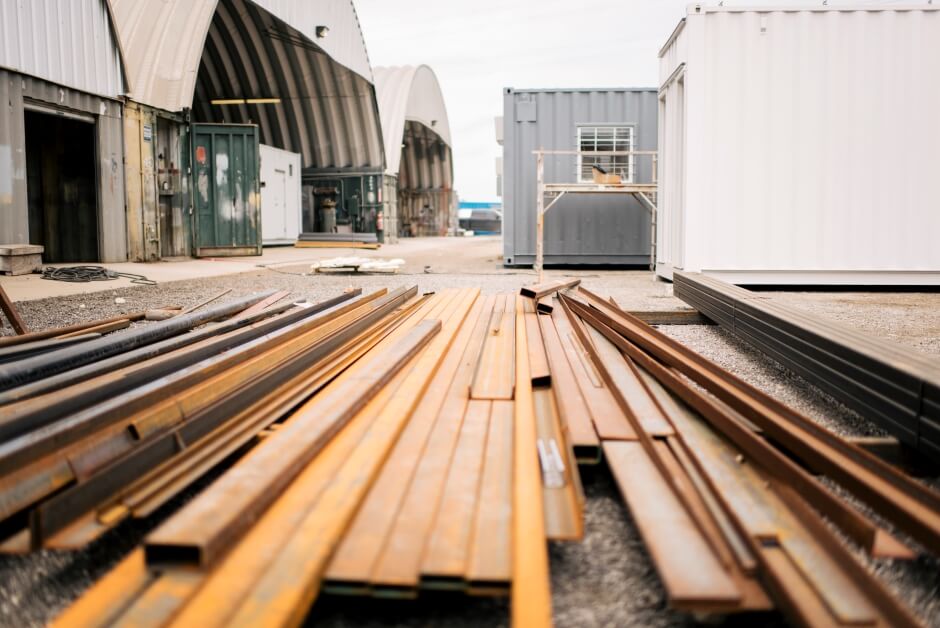Why a Design Freeze is Crucial to Successful Modular Construction
 Brian Dieringer | Mar 1, 2023
Brian Dieringer | Mar 1, 2023

20 years ago, my friend Stephen Shang and I started a modified shipping container company. At that time, I had no idea I was launching myself into the world of modular construction. Today, when a modular construction project comes to Falcon Structures, I’m hands-on from the start. I help guide and advise our customers on the ins and outs of modular construction—and above all else—I emphasize the importance of a design freeze.
What’s a Design Freeze?
A design freeze is a deadline for making all the major decisions for a construction project. It’s when you put your pencils down. Design freezes help teams plan a well-thought-out and detailed design. For modular construction to function at its best, involved teams must complete and agree on all designs prior to production work, helping prevent significant project rework.
Why is a Design Freeze Important?

It sounds simple enough to complete designs by a deadline, but you’d be surprised by how often organizations want to make changes down the road. Not to mention design changes are actually quite common in traditional construction, even well into the building phase. Modular construction can’t accommodate changes in the same way.
For example, if you order twenty modules created through modular construction practices, each unit will travel through fabrication from beginning to end in a streamlined process. Each unit will receive modifications at a different time and will therefore finish at a different time. With this understanding, you should even choose the paint color by the design freeze deadline. Advanced design approval keeps production efficient.
We’ve Learned from Experience
Modular construction can help reduce a construction schedule by 20-50%. To reap the efficiency benefits, a design freeze is essential. If you can’t settle on a design, modular providers will likely have to push back the start date, which forces them to push back the completion date. Our experience has proven time and again the importance of a design freeze.
Several years ago, we set out to build a sports complex and we knew we were working on a strict timeline. Understanding the urgency, we began cutting into the shipping containers to modify them. Three to four weeks later we learned from the project architect that we needed to pivot and change the windows we were using. Since some modules had already been completed through several stages, this meant significant rework and delays. With projects requiring a strict deadline, design changes tend to throw everything off. From this experience, we learned to emphasize the importance of a design freeze to our collaborators. Ideally, one design freeze should work for the entire project because we’ve seen that even phased approaches to design freezes can create problems if a project-wide change is desired.

What We Recommend
If you plan to work on a modular construction project that requires a design freeze, I recommend the following dos and don’ts to help you best prepare.
Do:
- Talk to your modular provider about your schedule. Even phased designs and delivery schedules must be well defined because—ideally—each stage should be considered a distinct project.
- Work together to set a design freeze date for each phase and commit to it.
- Collaborate with your mechanical, electrical, and plumbing (MEP) professionals from the start.
- Find a way to work with a repeatable design that will keep each unit as uniform as possible. One discrepancy in one unit makes for a completely different model. It’s important to minimize the number of unique models to maintain production efficiency.
- Get code officials involved (as always, but especially when working with a design freeze).
- Create a contingency plan for material supplies.
- Incorporate risk-adjusted planning into your design.
Don’t:
- Start work on a module you don’t have all the information on.
- Commit to a completion date without committing to a design freeze date—if that’s not possible, rethink your overall project.
Modular construction practices can help reduce construction schedules and can help 65% of building professionals lower the cost of their projects. These impressive benefits are actualized only when teams follow the set parameters, including adhering to design freezes. That means that the extra upfront effort to finish a design just might pay off—in a big way.
Brian Dieringer is the co-founder and executive vice president (EVP) of products at Falcon Structures. Working side by side with Falcon’s CEO, Stephen Shang, since 2002, Dieringer has developed and expanded Falcon’s product capabilities while managing design and engineering.
Falcon Structures is a shipping container modification manufacturing company working to build a better world by pioneering the use of container-based structures. Falcon modifies boxes to become storage units, workspaces, bathrooms & locker rooms, living spaces, industrial enclosures, and multi-containers.
SUBSCRIBE
- Shipping Container Modifications
- How-Tos
- Workspace
- Commercial Construction
- Multi-Container Buildings
- Storage Solutions
- Industrial Enclosures
- Bathrooms & Locker Rooms
- Oil & Gas
- Climate Control
- Green Building
- Living Space
- Industry Insight
- Military & Training Facilities
- Water Treatment Solutions
- Energy
THINK INSIDE THE BOX®
WITH OUR BLOG
Get everything from shipping container basics, to detailed how-tos and industry news in our weekly blog. Stay inspired and subscribe!
RELATED BLOGS

Safety in Construction: Ensuring Your Team is Well Equipped
Marissa Morin | Apr 27, 2022 | 3 min read
READ MORE

Could Shipping Containers Be a Solution to Affordable Teacher Housing?
Marissa Morin | Apr 19, 2023 | 3 min read
READ MORE

Modular vs Traditional Construction Cost: Which is Cheaper?
Marissa Morin | Jan 12, 2023 | 3 min read
READ MORE

